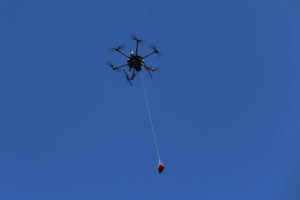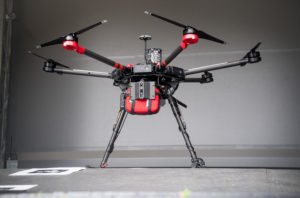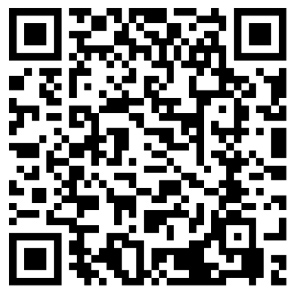An autonomous drone delivers a defibrillator – and saves the life of a cardiac arrest patient. Swedish drone company Everdrone says it’s a medical history first – but the grateful patient says that it’s a technology that should be used everywhere.


For heart attack patients, seconds count: the minutes that an ambulance can take to reach a patient in cardiac arrest can mean the difference between life and death. Autonomous drones offer a game-changing solution. Autonomous drone specialists Everdrone operate the drone delivery system in Region Västra Götaland, supported by Vinnova, Swelife and Medtech4Health. Their innovative solution has been developed with Center for Resuscitation Science at Karolinska Institutet, SOS Alarm and Region Västra Götaland.
Now, the technology can claim a life saved. In Trollhättan, Sweden on December 9,2021, an Everdrone autonomous drone delivered a defibrillator that helped save the life of a 71-year-old man.
“This is a truly revolutionary technology that needs to be implemented all over,” says the patient who now has made a full recovery. The applications are vast, according to Everdrone:
Approximately 275,000 patients in Europe and 350,000 in the US, suffer from OHCA [out of hospital cardiac arrest] annually. Approximately 70% of OHCAs occur in private homes without AEDs on site, and ambulance response times are often too long to save the life of the patient. The chance of survival decreases by 7–10% with each minute following the collapse, and consequently, the current survival rate among OHCA patients is merely 10%. Everdrone’s innovative airborne AED delivery service is a proven method to tackle this critical issue. The service can currently reach 200,000 residents in Sweden and is expected to expand to more locations in Europe during 2022.
In this case, a 71-year-old man was shoveling snow in his driveway when he suffered an out-of-hospital cardiac arrest (OHCA). “Thanks to the combination of an immediate emergency call, the quick actions of Dr. Mustafa Ali and the swift delivery of an Automated External Defibrillator (AED), lifesaving measures through defibrillation could be initiated before the arrival of the ambulance, and [the patient’s] life was saved,” explains the press release. “The time from the alarm until the AED was safely delivered at the doorstep of the incident address was just over three minutes. After the initial treatment on site, the patient was rushed to the hospital and is today fully recovered.”
For the doctor who used the tool, Dr. Mustafa Ali, the experience was unique.






